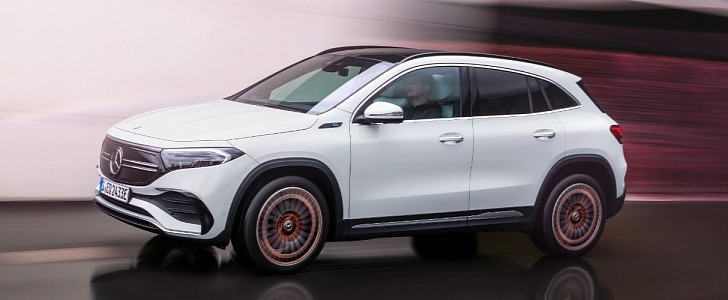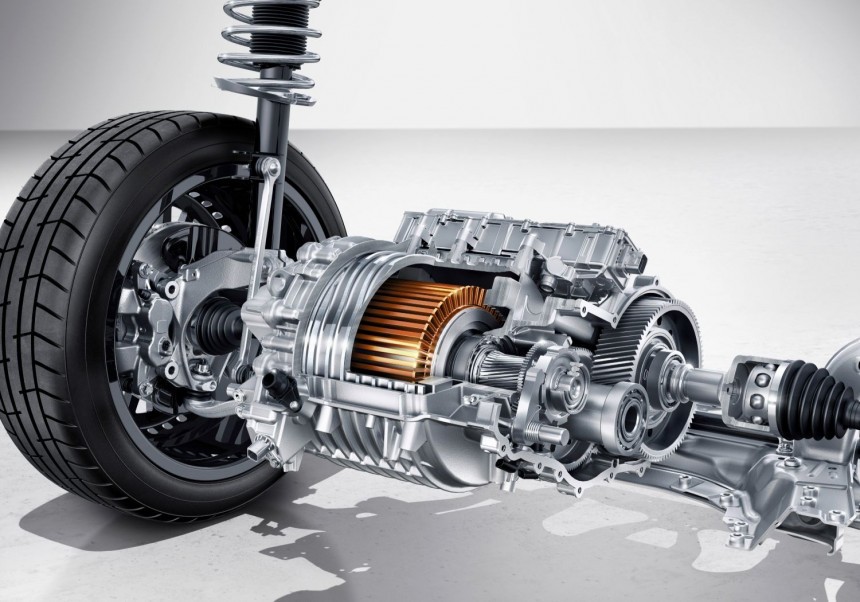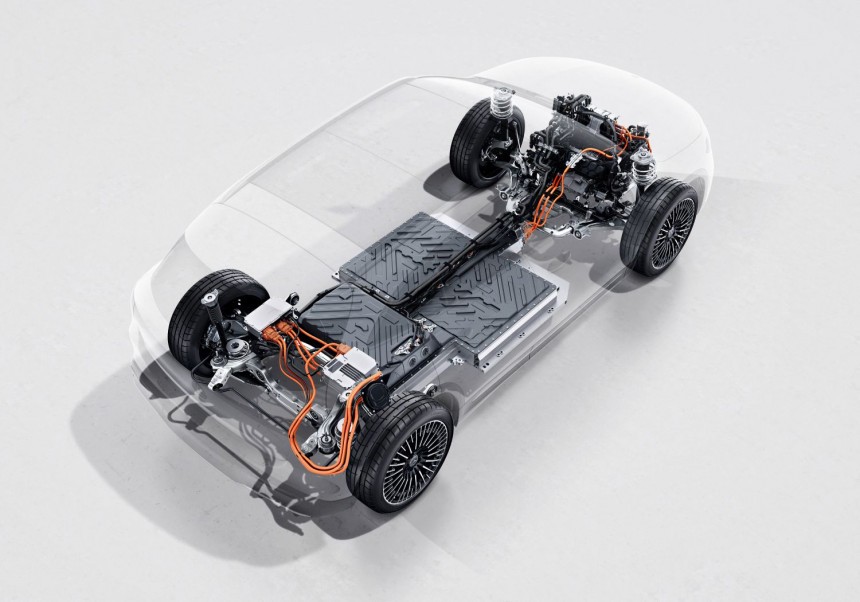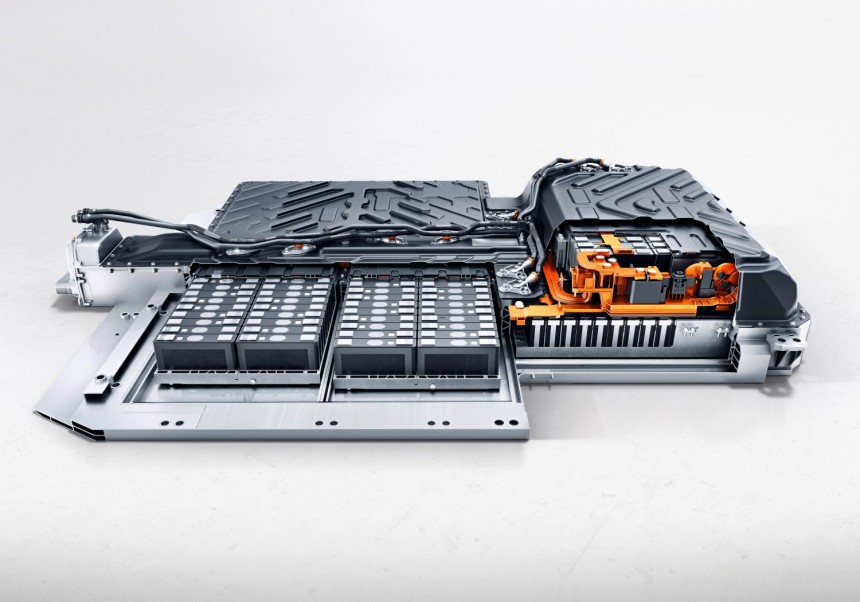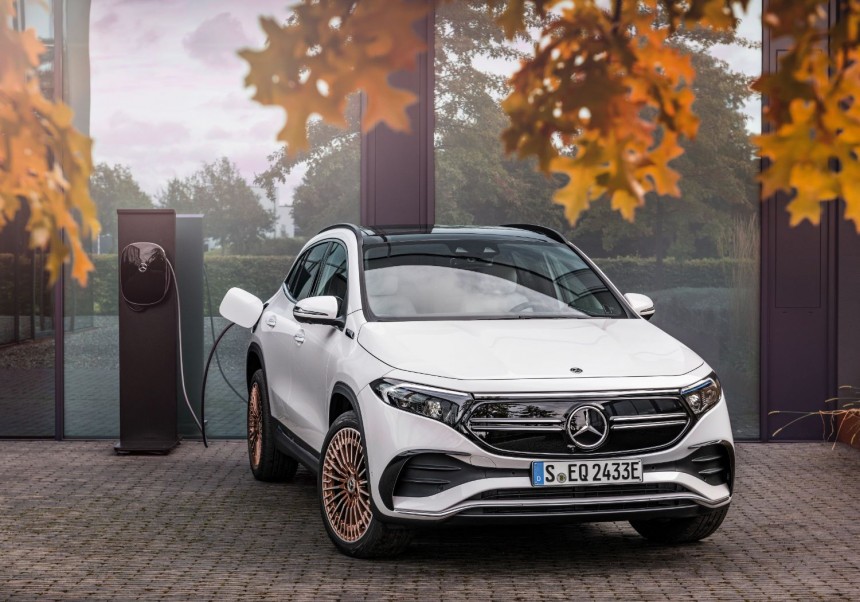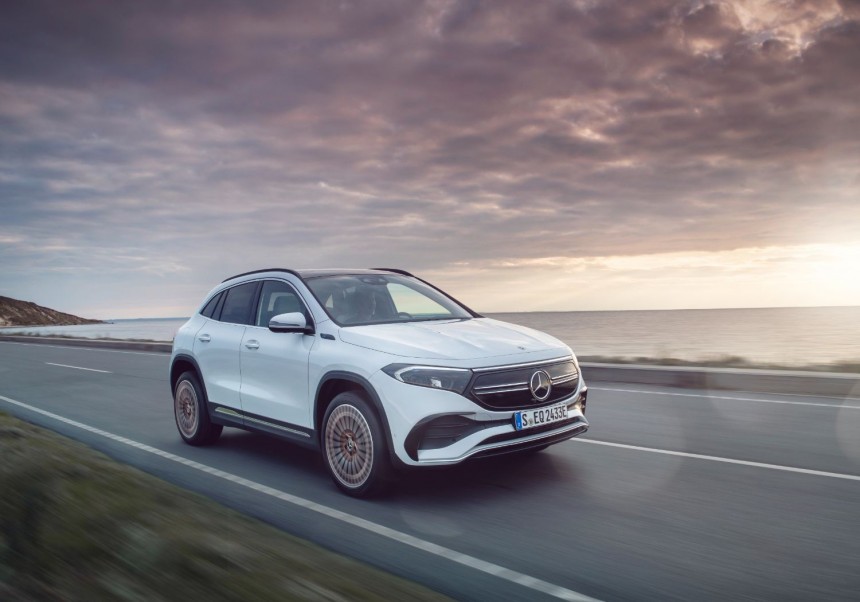The Stuttgart-based automotive giant recently launched the company’s latest EV, the entry-level EQA SUV powered by a highly efficient powertrain capable of delivering 188 hp.
Part of the carmaker’s EQ brand, the new subcompact SUV will be available as an alternative for the GLA-Class, offering all the exciting characteristics of that vehicle while using an emissions-free, all-electric powertrain.
Launched as the EQA 250, it offers a 486-km (302-mile) range according to the NEDC cycle using a single-motor FWD configuration, but Mercedes-Benz announced that other variants with additional powertrains and AWD capability would be introduced in the future.
In this model, the 140 kW (188 hp/190 PS) asynchronous motor, fixed-ratio transmission, differential, cooling system, and power electronics are all integrated into a single, compact unit mounted on the front axle. To fit the requirements of the front-wheel-drive system, the transmission ratio and gear wheels have been specifically configured.
This results in 375 Nm (277 lb-ft) of torque, which enables the SUV to accelerate from a standstill to 100 kph (0-62 mph) in a respectable 8.9 seconds, on the way to an electronically limited top speed of 160 kph (99 mph).
Further down the line, more powerful models will include an additional unit on the rear axle that features a redesigned, permanently excited synchronous motor. Inside it, the rotor is studded with permanent magnets that follow the rotating, alternating current field in the winding of the stator.
It’s called ‘synchronous’ because the rotor turns at the same rate as the magnetic field of the stator. Using the frequency converters of the power electronics, the rate is adjusted to meet the speed requirements of the vehicle. This results in a high level of efficiency and increased power-to-size ratio.
When the overrun mode is selected or during braking, the units are capable of energy recuperation by turning the electric motors into alternators that convert mechanical rotation into electrical energy used to charge the battery pack.
Speaking of the EQA 250's powerful high-voltage battery, it has a maximum voltage of 420V, a nominal capacity of 190 Ah, and a maximum capacity of 66.5 kWh.
The lithium-ion pack incorporates five modules and is located underneath the passenger compartment, in the middle of the vehicle. It employs a ‘double-decker’ design, with the ‘nose’ that houses the management system placed towards the front, behind the center console. Underneath the battery, a coolant-fed plate ensures that it’s always kept within the optimum temperature range.
If Navigation with Electric Intelligence is activated, the battery may be pre-heated or cooled while driving to ensure that it stays within the ideal temperature window for rapid charging.
To protect the assembly, engineers designed a high-strength aluminum housing, which is part of the chassis, also increasing its torsional rigidity.
However, the lowest point of the EQA is not the casing but the lower edge of the side skirts. This design shields the pack even further while still giving the versatile SUV more than 20 cm (7.9 in) of ground clearance.
Moving on to the onboard charger, it provides a convenient way of charging the vehicle using an alternating current (AC) wall box or a faster direct current (DC) charging station.
Charging times vary depending on several factors, but according to Mercedes, the EQA 250's battery can be charged from 10 to 100% in less than 6 hours using an AC connection with at least 11 kW and 16 A per phase.
Additionally, when DC rapid charging with a supply voltage of 400 V and a current of at least 300 A is used, the battery can be charged from 10 to 80% in about half an hour.
For both cases, the vehicle is equipped as standard in Europe and the U.S. with a CCS connector (Combined Charging System) located on the right-hand side.
In Japan or China, country-specific charging sockets will be used, and the carmaker states that charging times will also vary compared to the European and U.S model.
The Mercedes-Benz EQA is set to arrive in dealerships next year, with a starting price of €47,540 in Germany (the equivalent of $57,913 at the current exchange rate). That’s about $20,000 (€16,500) more than what customers have to pay for a base 2021 GLA in the U.S., though comparing German and U.S. pricing is not exactly relevant.
Launched as the EQA 250, it offers a 486-km (302-mile) range according to the NEDC cycle using a single-motor FWD configuration, but Mercedes-Benz announced that other variants with additional powertrains and AWD capability would be introduced in the future.
In this model, the 140 kW (188 hp/190 PS) asynchronous motor, fixed-ratio transmission, differential, cooling system, and power electronics are all integrated into a single, compact unit mounted on the front axle. To fit the requirements of the front-wheel-drive system, the transmission ratio and gear wheels have been specifically configured.
Further down the line, more powerful models will include an additional unit on the rear axle that features a redesigned, permanently excited synchronous motor. Inside it, the rotor is studded with permanent magnets that follow the rotating, alternating current field in the winding of the stator.
It’s called ‘synchronous’ because the rotor turns at the same rate as the magnetic field of the stator. Using the frequency converters of the power electronics, the rate is adjusted to meet the speed requirements of the vehicle. This results in a high level of efficiency and increased power-to-size ratio.
Speaking of the EQA 250's powerful high-voltage battery, it has a maximum voltage of 420V, a nominal capacity of 190 Ah, and a maximum capacity of 66.5 kWh.
The lithium-ion pack incorporates five modules and is located underneath the passenger compartment, in the middle of the vehicle. It employs a ‘double-decker’ design, with the ‘nose’ that houses the management system placed towards the front, behind the center console. Underneath the battery, a coolant-fed plate ensures that it’s always kept within the optimum temperature range.
To protect the assembly, engineers designed a high-strength aluminum housing, which is part of the chassis, also increasing its torsional rigidity.
However, the lowest point of the EQA is not the casing but the lower edge of the side skirts. This design shields the pack even further while still giving the versatile SUV more than 20 cm (7.9 in) of ground clearance.
Charging times vary depending on several factors, but according to Mercedes, the EQA 250's battery can be charged from 10 to 100% in less than 6 hours using an AC connection with at least 11 kW and 16 A per phase.
Additionally, when DC rapid charging with a supply voltage of 400 V and a current of at least 300 A is used, the battery can be charged from 10 to 80% in about half an hour.
In Japan or China, country-specific charging sockets will be used, and the carmaker states that charging times will also vary compared to the European and U.S model.
The Mercedes-Benz EQA is set to arrive in dealerships next year, with a starting price of €47,540 in Germany (the equivalent of $57,913 at the current exchange rate). That’s about $20,000 (€16,500) more than what customers have to pay for a base 2021 GLA in the U.S., though comparing German and U.S. pricing is not exactly relevant.
